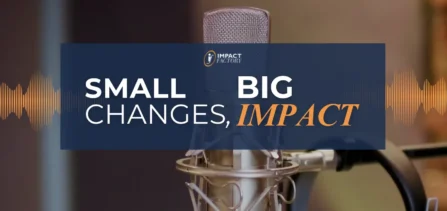
Storytelling: Our Five Top Tips
How to boost your speeches and presentations with the emotive power of storytelling!
Storytelling is our culture, and here are our storytelling top five tips to help you begin to tell your own stories
Stories play a pivotal role in human society. From early civilisation, the storyteller was one of the most important roles in a tribe, spanning the duties of teacher, entertainer, historian, and counsellor. Storytelling has even been described as the fundamental currency of human interaction.
The power of storytelling flows from its capacity to evoke emotion and how it serves the human mind’s preference for learning through observation. By hearing the story of someone else’s journey, we can compare it with our own experiences. We can understand how other people achieved success or suffered defeat, and adopt relevant messages to drive our own success.
No wonder storytelling is such an effective tool for presenting and public speaking. Compared to unemotive facts and figures, a well-placed story can illustrate, persuade, and inject purpose and passion into an audience.
Read Public Speaking – The Art of making speeches
Storytelling Top Five Tips
Here are our top five tips for capitalising on the power of storytelling.
1. Get Your Audience to Lean In
Storytelling should start with a high-impact opening that engages your audience from the outset. You want to focus their mind on the topic, and spark interest and curiosity so they want to know more. There are lots of ways to do this, such as:
- A bold or surprising statement: “The decisions we make today will have a lasting impact”
- A challenging question: “Can you remember the last time you helped a stranger in need?”
- A vivid description that sets the scene: “I’d like to take you back to 2019 before the pandemic”
- A statement from the heart: “I’ve been looking forward to this day for three years.”
2. Paint Pictures
Storytelling is about crafting mental images in the minds of your audience members, so give them things to see, hear, touch, smell, and taste in their imagination. In doing so, try to evoke memories that have strong emotions associated with them as this will help your audience connect with the topic on a deeper level.
For example, instead of saying “I joined the project in May” why not narrate it?
“I remember meeting the project team for the first time in a large conference room. One of the team members realised I was new and made a point of introducing me to everyone. That was Laura, and I was touched by how kind and welcoming she and everyone else were. I feel our strong team spirit is invaluable to this project, and I’m so proud of being part of this team.”
This small story communicates an important message about collaboration and does so emotively and motivationally.
Listen to our Storytelling Podcast
How to Use Storytelling to Boost Sales
3. We Want Heroes and Villains
Batman and Joker. Robin Hood and the Sheriff of Nottingham. Alice and the Queen of Hearts. All the best storytelling is a battle of wills between a hero and a villain.
Without an arch-enemy and insurmountable obstacles to overcome, we are unlikely to be interested in the story. Star Wars probably wouldn’t have been such a worldwide hit if Luke Skywalker’s core challenge was removing some rust from his X-wing fighter.
Your storytelling villains are anything that stands in the way of your objectives, such as technical complexities, resourcing issues, competitor strategies, or economic uncertainty. Spend time describing the challenges to create a real sense of threat and struggle. Then bring in your magic object, which can be an idea, solution, behaviour, or project that saves the day.
A story takes the audience on a journey from darkness to light, from despair to hope, and from failure to triumph. Your team or organisation are the heroes of this journey, and you want them to know they can win the battle.
In the world of storytelling, this puts you in the role of mentor. You are Obi-Wan to Luke, and Merlin to Arthur.
4. Let Your Body and Voice Support Your Story
Albert Mehrabian’s famous research into the power of non-verbal communication teaches us that words alone are not enough. Your body and voice are just as vital for conveying messages effectively.
If you want to evoke emotion while storytelling, express your own feelings through facial expressions, posture, hand gestures, tone of voice, and the emphasis you place on certain words. As your audience recognises the signs and sounds of passion, frustration, or relief, it encourages them to experience those emotions as well. One word of caution though: keep it real because audiences can be quick to spot melodrama.
Another tip is to try and make eye contact with everyone in the room, regardless of whether they appear to be reacting. Stillness in the face and body isn’t necessarily a sign of boredom or indifference, so use your eyes to keep everyone engaged and connected. This is just one of many tips for speaking with confidence.
Check out Speaking with Confidence: Our Ten Top Tips
5. Sum up the Meaning and Provide a Call to Action
A story without a good ending is like a joke without a punchline. Think about the underlying message of your speech or presentation, and what you want people to think, feel or do after you finish speaking.
In many cases, the success or failure portrayed by the story is its meaning. You could simply leave it at that and invite your audience to draw conclusions.
If you wish to be a bit more prescriptive, build your storytelling towards a moment that puts the ball in your audience’s court. This can be achieved with a powerful statement, thought-provoking question, memorable quote, or a simple explanation of why you told the story.
In this single moment, your audience will realise the full power of your storytelling, and understand its importance to the task at hand.
Storytelling Top Five Tips
Impact Factory runs
Tailored Storytelling Training
and personalised
One-to-One Storytelling Skills Training
for anyone interested in
Storytelling




